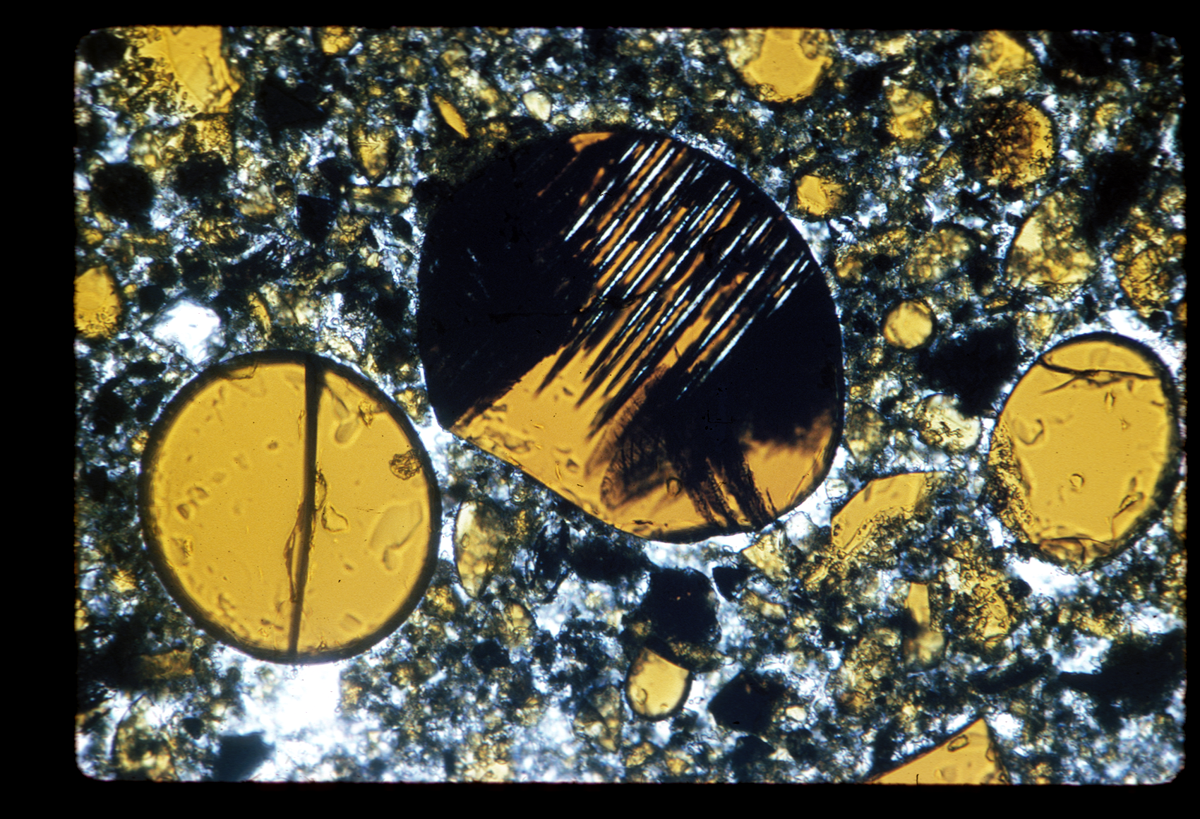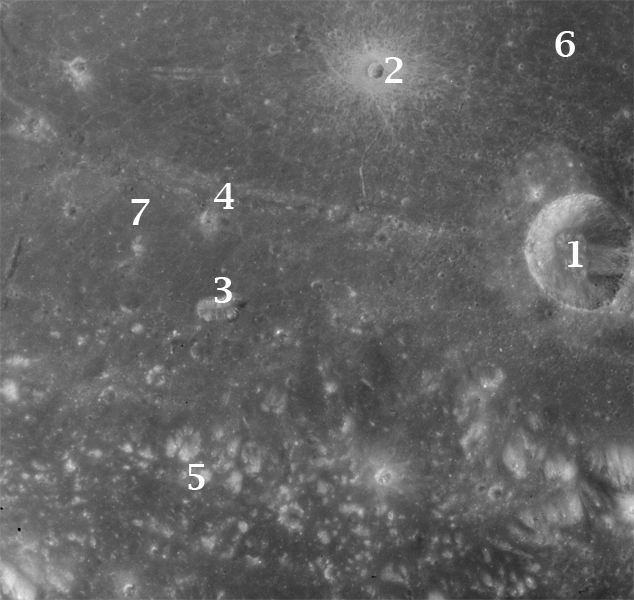
| Project Home | About the Scans | Browse Gallery | Image Map | Support Data | Resources | Ephemeris |
Featured Image - 10/07/2008
Sulpicius Gallus Formation: A Splash of Color
Astronauts Harrison Schmitt, Eugene Cernan, and Ronald Evans flew over the lunar surface in the Apollo 17 command module on their return trip from the Moon in 1972 and saw what looked like splashes of color on the lunar surface, particularly in the area west of Sulpicius Gallus crater. Apollo metric frame AS15-M-2041 (Figure 1) illustrates some of the features found in this region including a "kidney-shaped" depression that contains red and orange-colored materials in its walls. In addition to this depression, the crew of Apollo 17 noted orange-colored materials excavated by numerous small, fresh craters throughout the Sulpicius Gallus region. The orange color observed by the astronauts is due to the presence of orange-colored volcanic glass. Other darker minerals, mainly ilmenite (an iron-titanium-oxide), are also associated with the orange glass, causing a general darkening of the surface. Collectively, these "regional dark mantling deposits" are referred to as the Sulpicius Gallus Formation.
The Sulpicius Gallus Formation overlies both highlands and mare and occurs on the southwestern edge of the Serenitatis basin. This geological unit is thought to be made up of, at least in part, orange glass spherules like the ones collected from the lunar surface earlier at Shorty Crater in Taurus-Littrow (Figure 2). Study of the soils returned by Apollo 17 have led to the conclusion that orange soils and "dark mantling deposits" are pyroclastic in origin, probably having been emplaced by volcanic fire-fountains, leaving a dark mantle that subdues underlying topography. The "kidney-shaped" depression in Figure 1 is a potential source vent for at least some of the pyroclastic materials in this region.
Figure 1. Sulpicius Gallus Region (modified from Lucchitta and Schmitt, 1974, Figure 5b). (1) Sulpicius Gallus crater. (2) Fresh crater and excavated materials. (3) A "kidney-shaped" depression with bright and darker layers exposed in its walls (some of which are red and orange materials) that may be a source vent for at least some of the pyroclastics in this region. (4) Lunar graben and Rimae Sulpicius Gallus (runs roughly east-west through image). (5) Highland materials mantled by volcanics. (6) Unmantled mare in Serenitatis basin. (7) Mantled mare. Apollo Image AS15-M-2041 [NASA/JSC/Arizona State University].

Figure 2. Orange glass spherules in lunar soil collected during Apollo
17. The large orange spherule (volcanic glass) is approximately 0.2 mm
in diameter. Darker grains are ilmenite (an iron-titanium
oxide). [NASA/Arizona State University, Digital Petrographic Slide
Collection]
Regional pyroclastic and dark mantling deposits like the Sulpicius Gallus Formation are important targets for LROC, which will use images from its Narrow-Angle Camera (NAC) to search for source vents and its multispectral Wide-Angle Camera (WAC) to collect mineralogical information. Regional pyroclastic deposits are rich in volatile elements (such as sulfur, lead, and zinc) as well as other economically important elements like iron and titanium that are necessary for lunar development. Such an abundance of resources makes regional pyroclastic and dark mantling deposits high-priority candidates for future lunar landing sites.
References:
Lucchitta, B. K. and H. H. Schmitt (1974) Orange Material in the
Sulpicius Gallus Formation at the Southwestern Edge of Mare
Serenitatis, Proc. Fifth Lunar Conference, Geochimica et Cosmochimica
Acta 1 (Supplement 5): 223-234.

|
|
Space Exploration Resources |
|
 LPI LPI
|
